With more than half of the world’s population using emails, it is one of the best channels for businesses to communicate with customers. It helps raise brand awareness, nurture leads, and sell your products.
The returns on investment for email marketing being an averagely $36 for every $1 spent, it becomes profitable for brands to run an email marketing campaign.
This blog provides you with useful tips and tactics to help optimize your email marketing campaigns for better conversions. So, here we go…!
Contents
What are email marketing campaigns?
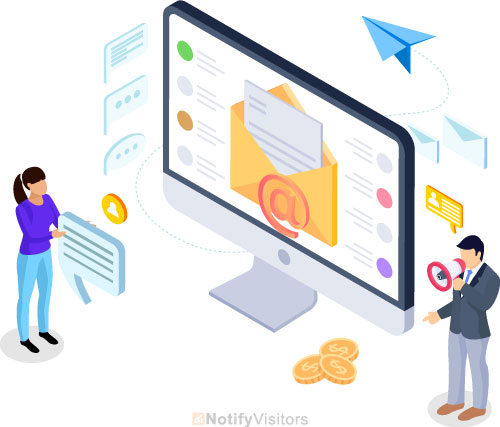
Email marketing is the sending of emails by a brand or business to a group of customers and prospects for marketing purposes.
An email marketing campaign comprises a sequence of emails sent for a specific marketing purpose such as increasing brand awareness, leads nurturing, driving engagement, introducing new features, announcing updates, and promoting products and services.
What are the benefits of running email marketing campaigns?
Running email marketing campaigns can benefit brands and businesses in multiple ways. These include:
1. Increasing brand awareness
With email marketing, businesses can spread the word about themselves, and their products and services by sharing educational content, valuable resources, updates, news, etc. with their subscribers.
2. Generating site traffic
Email marketing can help businesses drive more traffic to their website by including directing recipients to their landing pages, sales pages, recent arrival pages, blogs, etc.
3. Driving sales and revenue
Businesses can use email marketing to display their products and services to customers and try various promotional tactics to make more revenue.
For instance, announcing product arrivals, offering discounts and free shipping, employing cross-selling and upselling techniques, etc.
4. Promoting other customer touchpoints
You can use email marketing to drive traffic to different marketing channels like landing pages, social media, webinars, blogs, etc. For instance, ask subscribers to attend an online event you are conducting.
5. Engaging customers continuously
Email marketing facilitates creativity. You can experiment with your messages to see what works in keeping customers interested and excited about your brand.
For instance, you may find that visuals stimulate your audience, or they get interested when you include interactive buttons.
6. Gaining insightful business data
Email marketing facilitates gathering customer data and learning customer behavior. So, you can do this using email marketing software’s analytics feature or sending email feedback forms and customer satisfaction surveys.
Also, you can use this info to optimize your business, emails, products, and services. In the stage of collecting date, don’t forget to guarantee email security. In this matter, use the DMARC report analyzer, so your customers will be sure that their personal data is safe from attacks.
10 Tips and Tactics for a Successful Email Marketing Campaign
Here are 10 useful tips and tactics that businesses and their marketers can use to run an effective email marketing campaign.
1. Understand email marketing campaigns types
Each email is to a customer for a specific purpose. On this basis, email marketing campaigns can be classified into the following types:
- The welcome email marketing campaigns
- The Brand Engagement email marketing campaigns
- The Seasonal email marketing campaigns
- The Promotional email marketing campaigns
- The Post-Purchase email marketing campaigns
- The Triggered email marketing campaigns
- The Newsletter
- The Customer Retention email marketing campaigns
- The Re-Engagement email marketing campaigns
- The Cart Abandonment email marketing campaigns
- The Connect-Via-Social-Media email marketing campaigns
Whichever email marketing campaign you implement, make sure that you personalize it according to the recipient’s action. Otherwise, you risk being intrusive and vexing.
2. Build an Email List
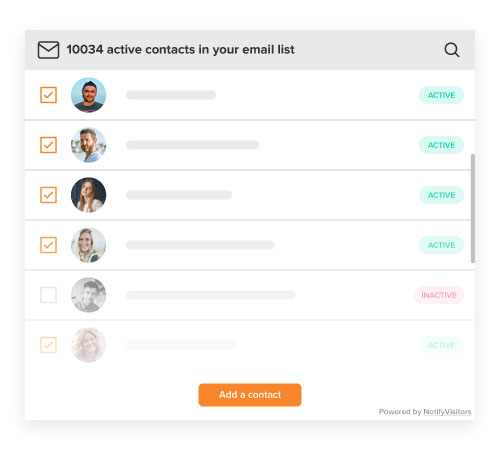
An email list is a prerequisite for email marketing. Here are several ways to build your email list.
- Put a sign-up sheet on your website and offline events like trade shows.
- Collect business cards from where you can gather email addresses.
- Host an online event and ask people to enroll with their email addresses.
- Incentivize site visitors to part with their email info. It can be a free checklist, guide, e-book, consultation, or anything else.
- Try telemarketing
- Include a call-to-action at the end of each blog where readers are encouraged to subscribe to your emails.
- Post interesting text and visual content on social media and encourage people to sign up for your emails.
- Set up a community and interact with your audience. Have a sign-up form for your email newsletter there.
- Encourage loyal customers to forward the link to your sign-up page to their family, friends, and colleagues.
- Include your own email list.
- Get active on blogs and forums and post useful comments there. Always leave a link to your site’s page where they can find your opt-in.
- Get employees involved in the mission. Reward them for gathering valid and testable email ids.
There are many more ways to expand your email list. Try a variety of them.
3. Target your emails to the right recipient

A vital requirement for running email marketing campaigns is ensuring that you are sending them to the right audience.
For, this will facilitate delivering relevant emails to customers and increasing conversions. So, segment your email list using a segmentation tool like NotifyVisitors.
It will categorize each customer based on his or her demography, technology, geography, stage in the user journey, content downloaded, pages visited, interests in certain products, amount of money spent on products, time and type of previous purchase, participation in events, etc.
4. Personalize your emails
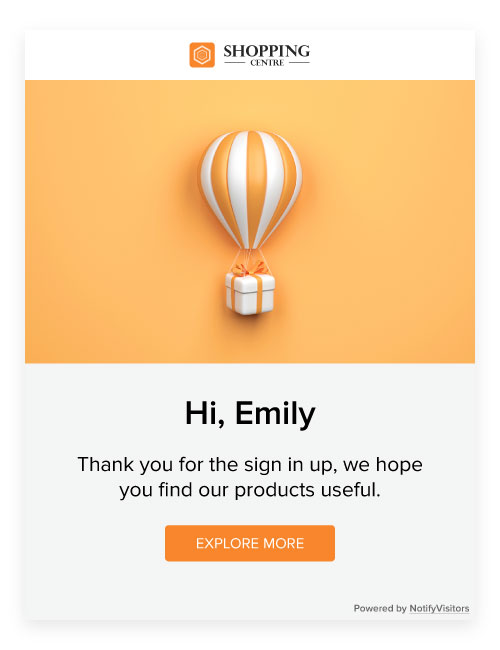
71% of people tend to open and read personalized emails. Apart from customer segmentation, there are several other ways to personalize your emails. Here they are-
- Address email recipients with their first name.
- Send emails based on customers’ actions triggered emails). For instance, sending user tips while welcoming a new subscriber, sending re-engagement messages when a customer hasn’t used your services for a while, etc.
- Send a creative personalized message to show your customers that you know them. For instance, greeting them on their birthday with a discount coupon, giving top customers a special benefit, etc.
- Send them tips and tricks to make the most out of their recently purchased product.
- Every time you send emails, send them from the same email address.
- Reach out at the right time. Use email marketing software to track the time and day of the week when the recipient reads your emails. This way, you can find the most appropriate time to send your messages.
- Recommend products that the recipient is likely to be interested in.
- Send links to blogs that they are likely to read.
5. Create a compelling subject line
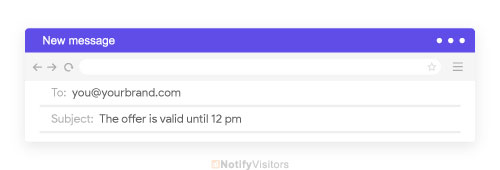
Your subject line is the first thing your recipient will look at before deciding whether or not to open your email. So, come up with an appealing and honest subject line that would grab his attention.
Rather than using flashy phrases like “earn cash!”, “make money!”, etc. create subject lines that awaken his curiosity, while simultaneously conveying the truth.
Here are more tips to come up with catchy subject lines for your email marketing campaigns:
- Keep it short and sweet.
- Use a recognizable sender name.
- Never use sender name in the format “noreply@company.com”
- Include the recipient’s name.
- Refrain from using false promises.
- Tell them what’s inside.
- Begin with action-oriented words. For instance, “Buy gold at exclusive offer price from JS Jewellers Mrs. Jones”.
- Make people feel special.
- Use numbers such as 50% off, 1000+ varieties, 750 attendees, etc.
- Ask a compelling question. For instance, “Do you know what your users think of your ads?”
- Avoid using all caps like “SHOP NOW AND GET YOUR FREE TRIAL”
6. Keep your layout and copy simple
The key to creating winner emails is being minimalistic. Refrain from overloading your email’s layout with huge fonts, images, flashy graphics, etc.
Let it be professional, simple, clean, and easy to navigate. An overcrowded layout will only repel your recipients, making them send your email to the trash.
Likewise, keep your copy too short. Because a study found that emails that have 75 to 100 words are the ones to get the best response rates.
If tracking word count is difficult for you, go for limiting the number of sentences to no more than five. So, have only one clearly stated goal per email.
7. Include a call to action
Your email’s message should convey the response action you want your customers to take.
It may be asking them to fill out a survey, click on a link, visit your site, purchase a product, signup for an event, or something else. Whatever it may be, make sure that you have incorporated a CTA in your email.
Here are a few examples of CTAs to use in your email marketing campaigns:
- Shop now
- Learn more
- Shop now. Get 50% off.
- Yes! I want one.
- Claim your coupon
- Buy it today
- Order now
- Get free shipping
- Watch now
- Reserve your seat
- Claim your birthday coupon
- Read more
- Our gift: 15% off
- Read the full story
- Let me know what you think!
- Register now
- Download now
- Hear her story
- Act now
- Get the app
- Book your tickets
- Count me in!
- Sign me up
- Register for our webinar
- Start your free trial
- Upgrade now
- Like us on Facebook
- Take a survey
- Let us know how we did
- Book your appointment
- Find out how
- Stay connected on social media
8. Sign Off With Gratitude

As your emails focus on shortening the length of your copy, you can run the risk of appearing abrupt and blunt.
Also, you can prevent this by expressing thankfulness for their time and efforts in reading your email in your sign-off. This can keep things pleasant and increase your email’s response rate.
Reports say that sign-offs that had some form of “thank you” message increased the response rate by 36%. Here are some different ways to say “thanks” in an email.
- Thanks!
- Many Thanks!
- Thank you!
- Appreciatively
- With gratitude
- With gratefulness
- Thanks for your unwavering support!
- Thank you so much!
- Thanks a million!
9. Automate Your Emails
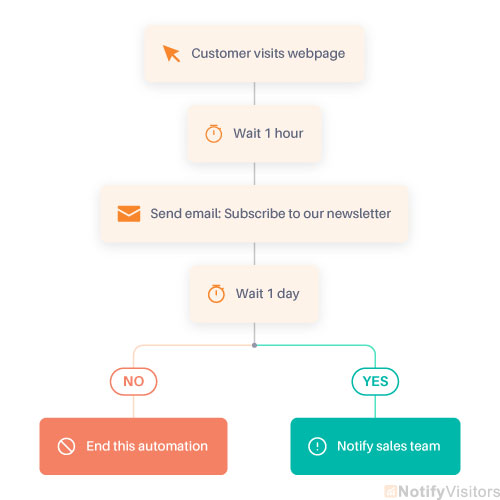
Automating your email program will save you a lot of time and resources and ensure consistency in send pattern.
You can ensure high levels of personalization with automated emails by monitoring customer journeys and sending relevant content.
With email marketing software, you can establish automated workflows to trigger emails to be spent as per specific customer actions.
For instance, you can automate the sending of welcome emails to individuals as soon as they subscribe to your newsletter. With email marketing automation software, you can send the right message to the right person at the right time.
10. Analyze your email campaigns
Analyzing the performance of your email marketing campaign will help in optimizing your future campaigns to enhance performance. The metrics that you should gather and evaluate are:
- Open and click rates
- E-commerce data
- Website traffic
- Bounce rates
- Unsubscribe rates
- Conversion rates
- List growth rates
Conclusion
Email marketing always has its charm and benefits. Your email marketing campaigns need to be designed meticulously to ensure that your emails don’t end up in the trash. Follow our tips to help your email stand out from amongst a hundred other emails in the inbox.
Also Read:
- 17 Brilliant Email Marketing Campaign Examples
- What is Mass Email? 3 Ways to Send Personalized Mass Emails
- Cold Email: Definition, Examples, Templates and How to Write it?
- 14 Best Email Automation Tools to Try [Compared]
- 19 Best eCommerce Email Marketing Software

























 Email
Email SMS
SMS Whatsapp
Whatsapp Web Push
Web Push App Push
App Push Popups
Popups Channel A/B Testing
Channel A/B Testing  Control groups Analysis
Control groups Analysis Frequency Capping
Frequency Capping Funnel Analysis
Funnel Analysis Cohort Analysis
Cohort Analysis RFM Analysis
RFM Analysis Signup Forms
Signup Forms Surveys
Surveys NPS
NPS Landing pages personalization
Landing pages personalization  Website A/B Testing
Website A/B Testing  PWA/TWA
PWA/TWA Heatmaps
Heatmaps Session Recording
Session Recording Wix
Wix Shopify
Shopify Magento
Magento Woocommerce
Woocommerce eCommerce D2C
eCommerce D2C  Mutual Funds
Mutual Funds Insurance
Insurance Lending
Lending  Recipes
Recipes  Product Updates
Product Updates App Marketplace
App Marketplace Academy
Academy

